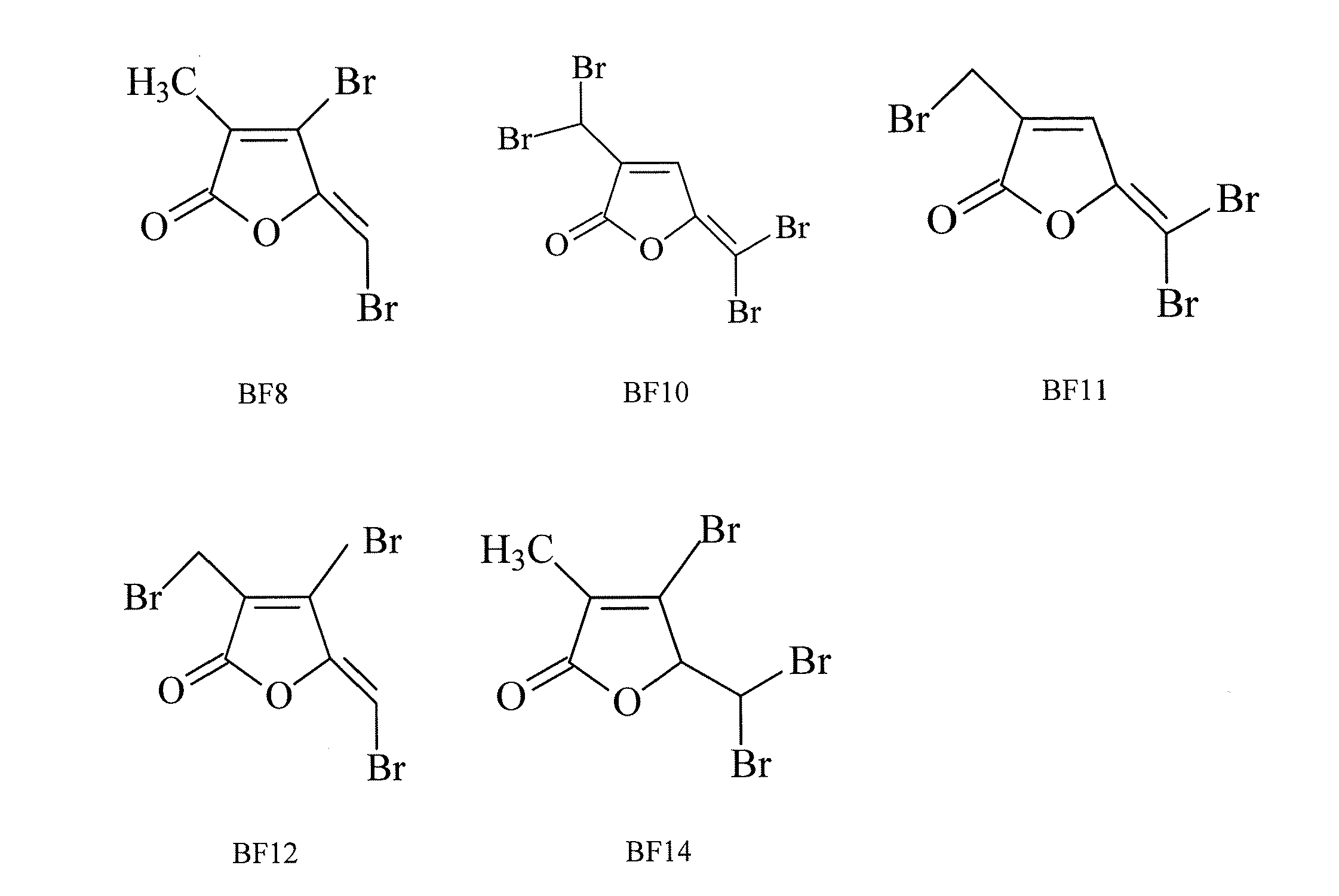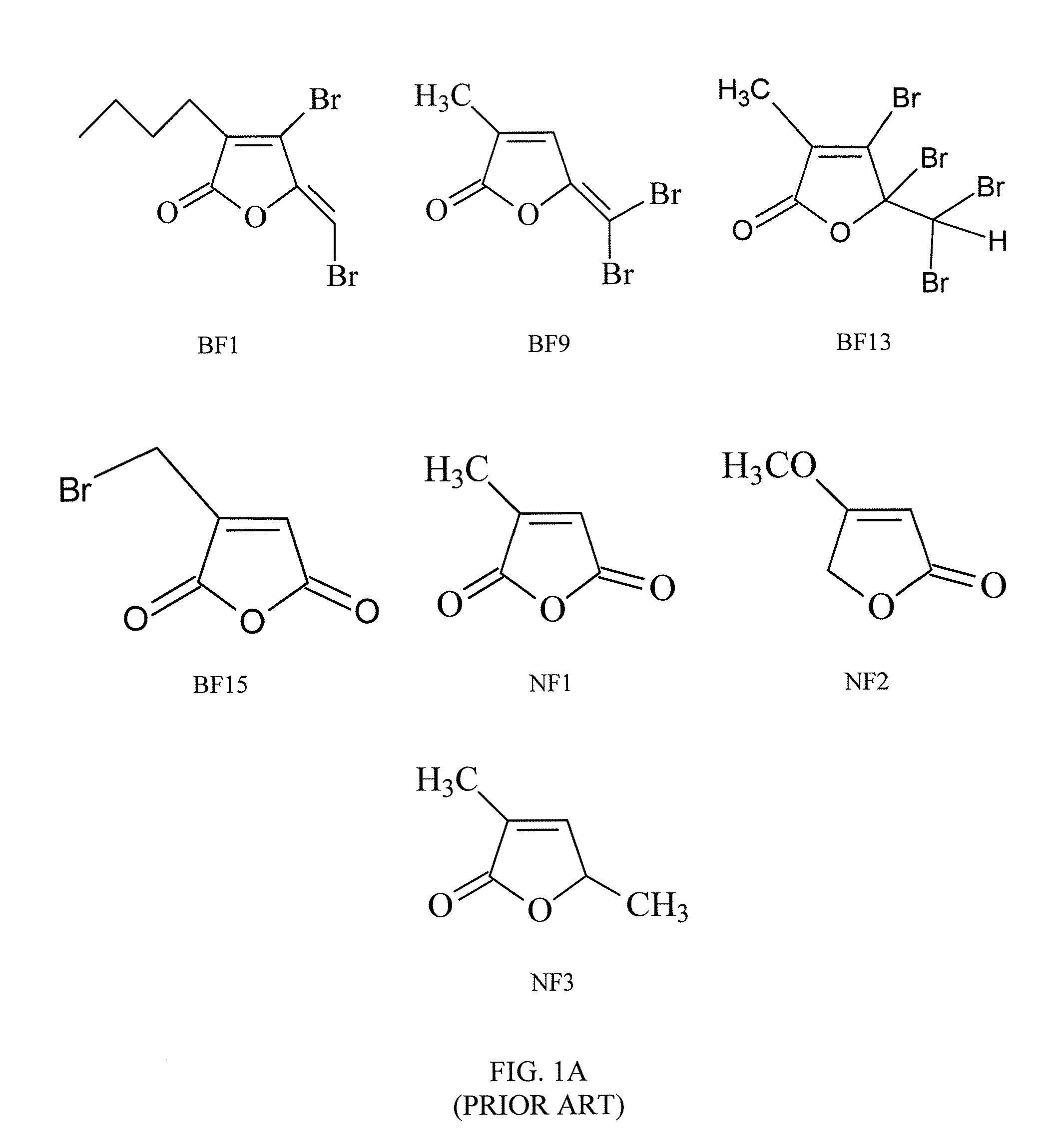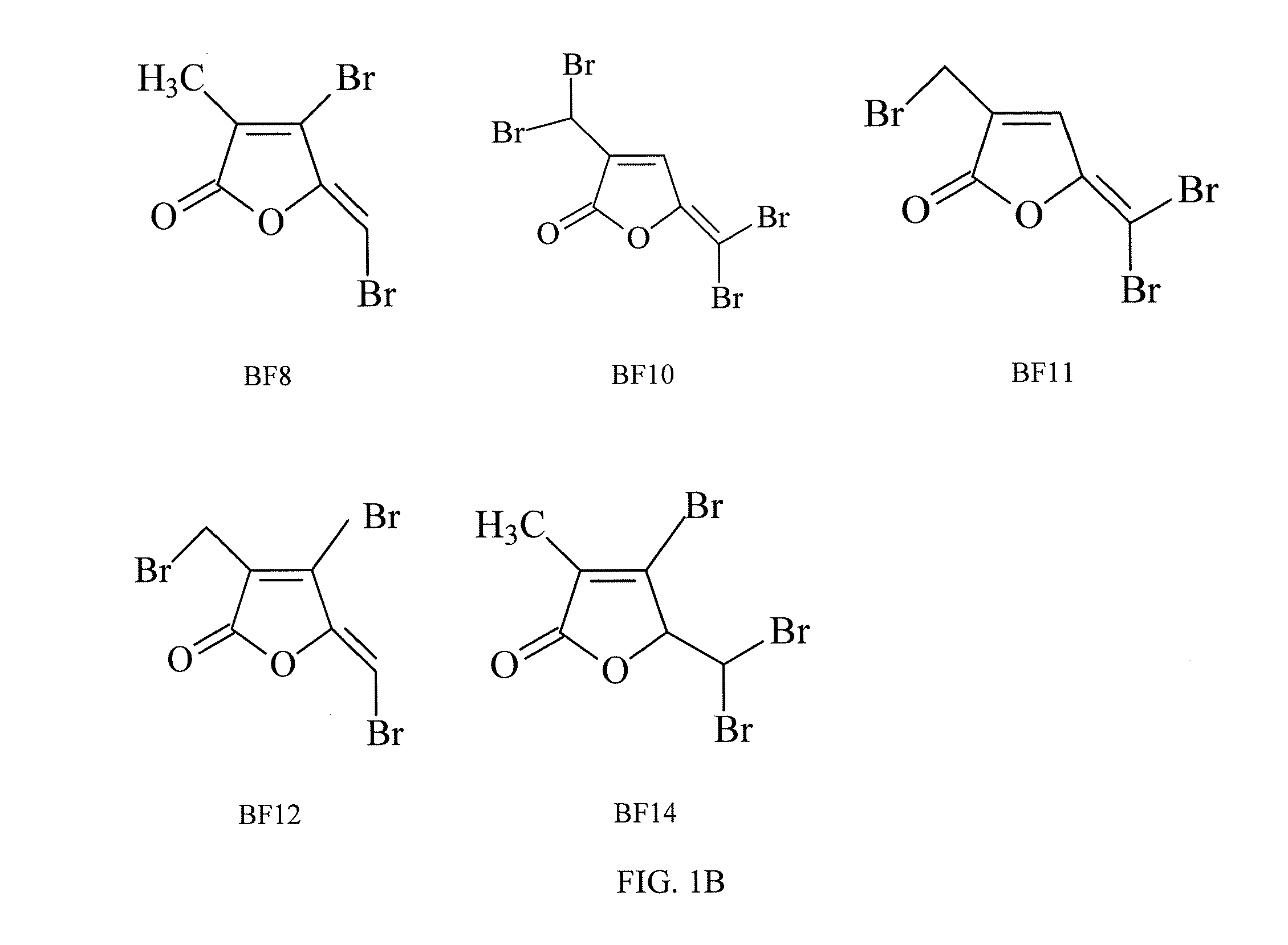System and method for controlling growth of microorganisms with brominated furanones
a technology of brominated furanone and microorganisms, which is applied in the field of antimicrobials, can solve the problems of increasing the number of deaths annually, affecting causing millions of dollars in damage to fungi every year, so as to prevent the growth of microorganisms, provide an antibacterial agent, and prevent the growth
- Summary
- Abstract
- Description
- Claims
- Application Information
AI Technical Summary
Benefits of technology
Problems solved by technology
Method used
Image
Examples
example 1
[0049]The brominated furanones BF8, BF10, BF11, BF12, and BF14 were synthesized using a novel method, as shown in FIG. 2. First, brominated furanones BF8, BF9, and BF14 were synthesized via bromination of commercially available α-methyllevulic acid followed by oxidative ring closure under acidic condition. A Wohl-Ziegler bromination reaction was then used to obtain BF12 and BF13 from BF8 as well as BF10 and BF11 from BF9. In a preferred embodiment of the synthesis method, the brominated α-methyllevulic acid was treated with 98% H2SO4 to promote intramolecular cyclization, and the Wohl-Ziegler reaction used commercially available N-Bromosuccinimide (“NBS”).
[0050]The synthetic molecules were separated and purified by column chromatography to obtain a purity of at least 95%, and all the molecules were characterized by proton and carbon-13 nuclear magnetic resonance spectroscopy as well as by high resolution mass spectroscopy.
[0051]Among other benefits, this novel method of synthesis em...
example 2
[0052]To evaluate the effects of furanones on fungal growth, C. albicans was grown in a synthetic dextrose (“SD”) medium supplemented with 0, 2.5, 5, 10, or 20 μg / mL of one of eight different brominated furanones and two nonbrominated furanones (BF1, BF8, BF9, BF11, BF12, BF14, NF1, NF2, or NF3).
[0053]The brominated furanones were synthesized as described in Example 1, while NF1 and NF2 were obtained from Sigma® (St. Louis, Mo.). NF3 was obtained by treating α-methyllevulic acid with phosphoric acid (H3PO4) at 140-150° C. All of the synthetic molecules were purified by column chromatography to obtain a purity of at least 95%. All molecules were characterized by proton and carbon 13 nuclear magnetic resonase (NMR) spectroscopy and high resolution mass spectroscopy (HRMS).
[0054]The Candida albicans strain SC5341 used in this study was provided by Dr. Sean Palecek from the University of Wisconsin-Madison. C. albicans was routinely grown overnight at 30° C. and shaken at 200 rpm in a SD...
example 3
[0057]To further examine the effect of brominated furanones on fungal growth and understand whether BFs are fungicidal agents to C. albicans, BF1 was used as the representative compound in a viability assay based on colony-forming unit (“CFU”) counting. An overnight culture of C. albicans was sub-cultured in 100 mL of SD medium to an initial OD600 of 0.005 and was grown for 24 hours. The cells were then harvested by centrifugation at 4,500 rpm for 5 minutes at room temperature and washed twice with 0.85% NaCl buffer. Then the cells were resuspended in 0.85% NaCl buffer and supplemented with 0, or 60 μg / mL BF1, BF8, BF9, BF10, BF11, BF12, or BF14 to an OD600 of 2.0 using 17×100-mm polystyrene test tubes (Fisher Scientific). After incubation at 30° C. for 6 hours with shaking at 200 rpm, the treated cells were spread on Yeast Extract Peptone Dextrose (YPD) plates containing 20 g / L peptone, 10 g / L yeast extract, 20 g / L dextrose and 15 g / L agar. The colony-forming units (CFUs) on the pl...
PUM
| Property | Measurement | Unit |
|---|---|---|
| concentration | aaaaa | aaaaa |
| concentration | aaaaa | aaaaa |
| concentration | aaaaa | aaaaa |
Abstract
Description
Claims
Application Information
 Login to View More
Login to View More - R&D
- Intellectual Property
- Life Sciences
- Materials
- Tech Scout
- Unparalleled Data Quality
- Higher Quality Content
- 60% Fewer Hallucinations
Browse by: Latest US Patents, China's latest patents, Technical Efficacy Thesaurus, Application Domain, Technology Topic, Popular Technical Reports.
© 2025 PatSnap. All rights reserved.Legal|Privacy policy|Modern Slavery Act Transparency Statement|Sitemap|About US| Contact US: help@patsnap.com



